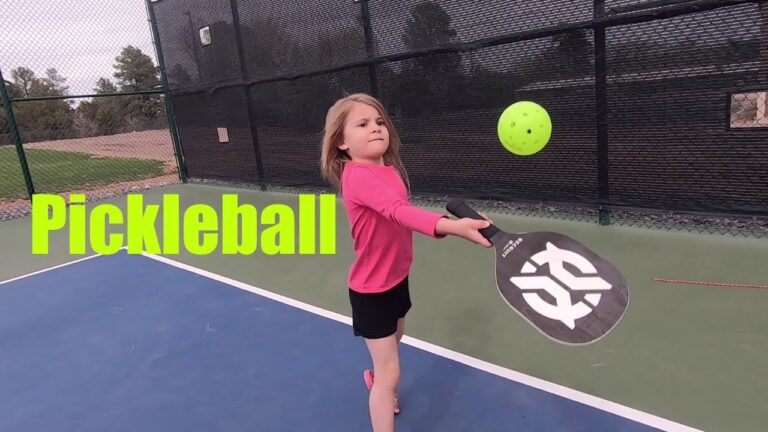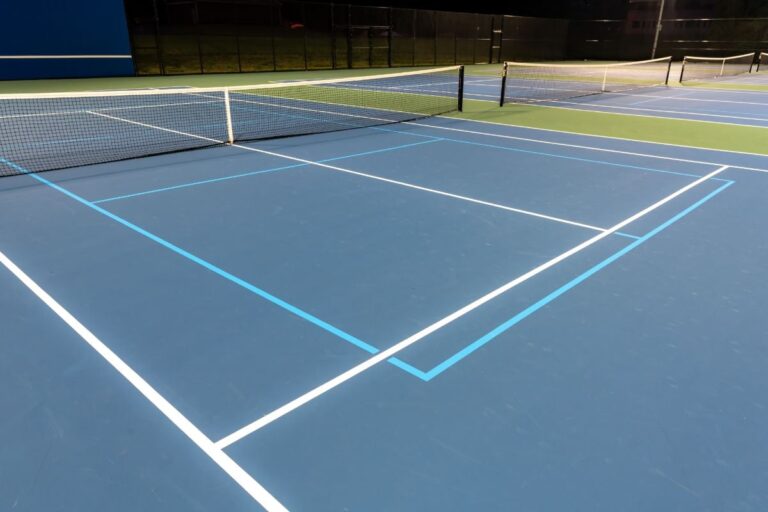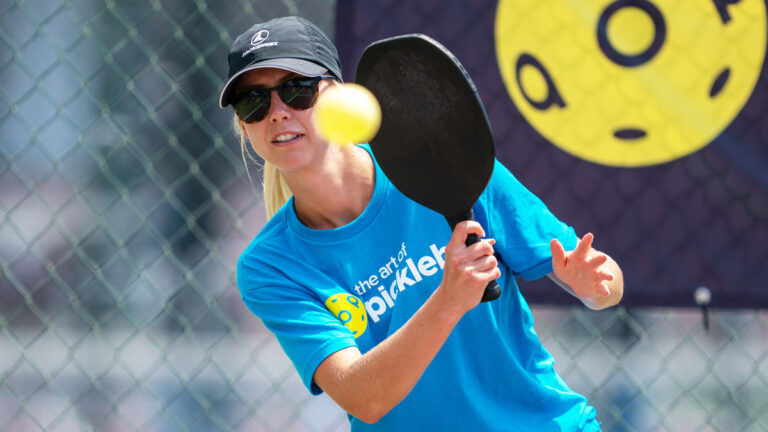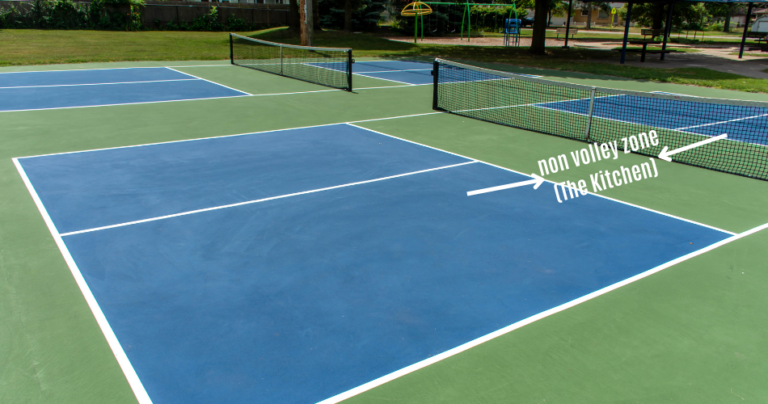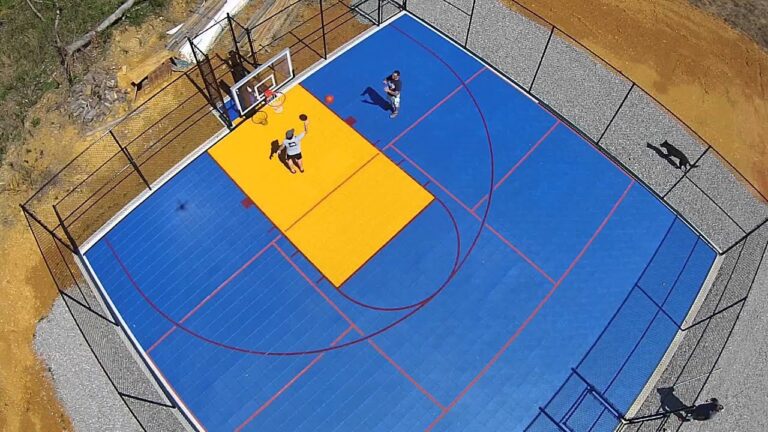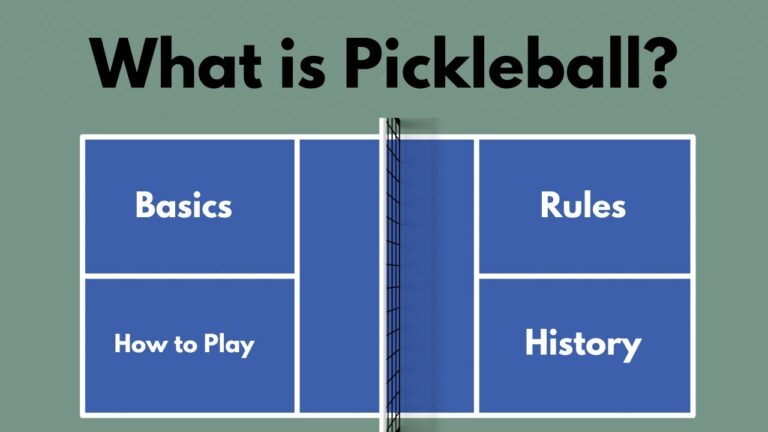Pickleball Rally Scoring System (2024 Rules Guide)
If you’re new to the game of pickleball, you may have heard about rally scoring and wondered how it works.
We will explore the ins and outs of pickleball rally scoring, including the differences between rally scoring and traditional scoring.
Learn how to keep score, the advantages and disadvantages of rally scoring, and get some tips for playing with this scoring system.
Understanding rally scoring is essential for enjoying the game to its fullest, whether you’re a beginner or a seasoned player.
Key Takeaways:
- Rally scoring in pickleball is a fast-paced system that rewards points for every rally won.
- Players must understand the points system and keep track of points on a scorecard during the game.
- While rally scoring can lead to longer games, it also creates a more competitive and equal opportunity for both teams to win.
What is Pickleball Rally Scoring?
Rally Scoring is a scoring system used in the sport of pickleball where points can be scored by the serving or the receiving team, making each rally highly competitive and crucial.
This scoring method ensures that each point is hard-fought and adds to the suspense and excitement of the game. Unlike traditional scoring systems, where only the serving team can earn points, rally scoring allows both teams a fair chance to accumulate points. It creates a fast-paced dynamic where every serve and return matters, encouraging strategic plays and quick thinking on the court. This scoring format places a premium on consistency, teamwork, and adaptability, as players need to maintain focus and performance throughout each rally to secure victory.
How Does Pickleball Rally Scoring Work?
Rally Scoring works by allowing the serving team to score points regardless of who served the ball, with the scoring alternating between the two teams until the game is won.
In a rally, points can be earned by the serving team if they win the rally. The serving team can continue to score points until their opposing team wins a rally, thus gaining the serve. The scoring continues in this back-and-forth manner throughout the game. The receiving team, on the other hand, aims to win the rally in order to gain the serve and a chance to score points themselves. This dynamic ensures that both teams have opportunities to score and showcase their skills on the court.
What are the Differences between Rally Scoring and Traditional Scoring?
The main difference between Rally Scoring and Traditional Scoring in pickleball lies in how points are earned and the pace of the game.
In Rally Scoring, points can be scored by the serving team or the receiving team, regardless of who serves, which leads to more continuous play and faster-paced matches. This scoring system incentivizes aggressive play and rewards consistency throughout the game, as every point matters towards the final outcome.
On the other hand, Traditional Scoring only allows the serving team to score points, which can lead to longer games and more strategic serving strategies. The dynamic nature of Rally Scoring encourages a more dynamic and engaging gameplay experience for players and spectators alike.
Scoring System
The scoring system in pickleball determines how points are allocated between the serving and receiving teams based on the outcome of each rally.
When a serving team wins a rally, they score a point and retain the serve for the next rally. The first team to reach 11 points with a two-point advantage wins the game. If the score reaches 10-10, the game continues until one team leads by two points. On the other hand, when the receiving team wins a rally, they score a point and have the opportunity to serve next.
Serving Rotation
Serving rotation in pickleball involves the designated servers taking turns to serve the ball, with the first server starting the game and the rotation continuing throughout.
The initial server plays a crucial role as they set the tone for the game, aiming to score points while serving. Once the first server completes their serving turn, they switch positions with the second server, who then continues the cycle. This rotation ensures that each player gets the opportunity to serve and showcases their serving skills. The serving order is typically determined at the beginning of the match and follows a consistent pattern throughout the game, creating a fair and strategic gameplay experience for all players involved.
Length of Games
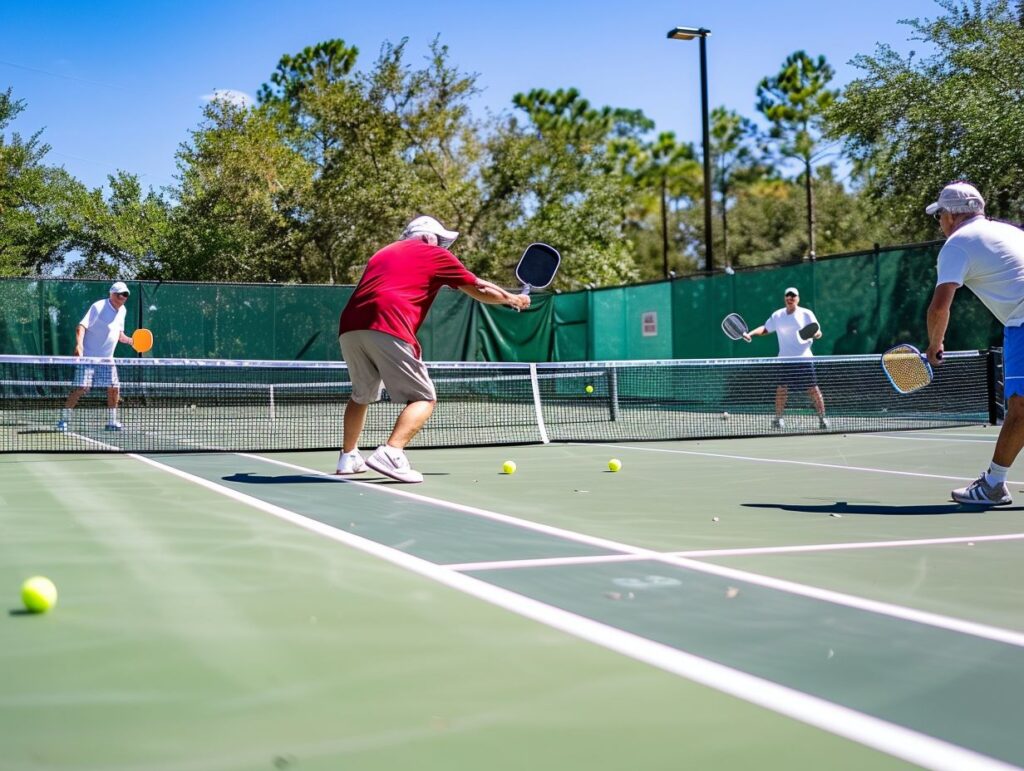
In pickleball, the length of games can vary depending on the scoring system used, with the final point determining the winning team.
Players strive to reach that crucial final point as it signifies not only the conclusion of the game but also the victory for one side. Each rally and serve intensifies as the score approaches the final point, creating a tense yet exhilarating atmosphere on the court.
The excitement builds up as players aim to outmaneuver their opponents and secure that winning point, making every decision and shot crucial in the final moments. Understanding the significance of the final point adds a strategic element to the game, requiring players to be both precise and strategic in their plays.
How to Keep Score in Pickleball Rally Scoring?
Keeping score in Rally Scoring involves understanding the point system and tracking points on the scorecard throughout the game.
In Rally Scoring, the scoring system is relatively straightforward. Each game is played to 11 points, and a team must win by a margin of at least 2 points. Points can only be scored by the serving team. The serving team alternates sides after every point scored until the end of the game. To keep track of the score, players commonly use a scorecard or a handheld tally counter. It’s crucial for both teams to stay alert and accurate in tracking the score to ensure fair play and maintain the flow of the game.
Understanding Points System
The points system in pickleball follows a numerical sequence, with odd numbers indicating the serving team’s score and even numbers representing the receiving team’s score.
This setup adds an element of strategy to the game, as players must consider the implications of each point scored. For instance, scoring an odd number allows the serving team to continue serving, putting pressure on the opponents to break their streak. On the other hand, scoring an even number gives the receiving team the opportunity to serve, potentially shifting the momentum of the match.
Tracking Points on the Scorecard
Tracking points on the scorecard is essential to keep a record of the scores at the end of every rally and ensure accuracy in scoring.
By meticulously recording each point won by either side, players can clarify disputed calls, avoid confusion during heated moments of a match, and establish a clear winner. The point-tracking process involves a systematic approach where every point is counted accurately, providing a comprehensive history of the game’s progression. Accuracy in scorekeeping not only upholds the integrity of the game but also enhances players’ understanding of their performance and strategies.
Advantages of Rally Scoring in Pickleball
Rally Scoring offers several advantages, including a faster pace of play, more competitive matches, and equal opportunities for both teams to showcase their skills.
One of the significant impacts of rally scoring is the heightened level of engagement it brings to the game. This scoring system ensures that every point scored adds to the overall excitement and intensity of the match, keeping players and spectators alike on the edge of their seats.
The implementation of rally scoring has been noted to enhance the strategic aspect of the game. With every rally becoming crucial, players are required to execute their shots with precision, leading to a more tactical and engaging playstyle.
Faster Pace of Play
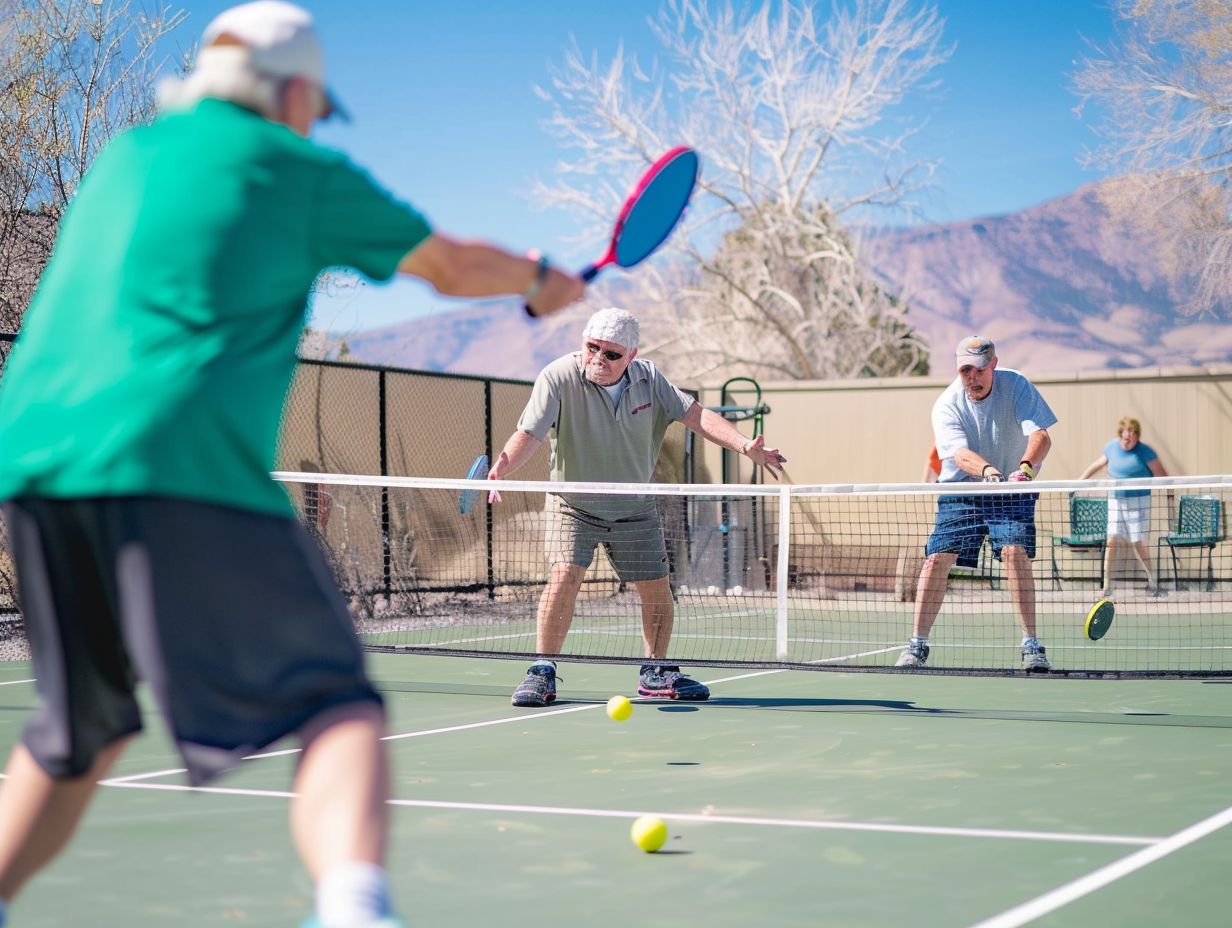
One of the key advantages of Rally Scoring is the faster pace of play, leading to more engaging and dynamic rallies.
Rally Scoring not only quickens the tempo of the game but also intensifies the competition on the court. With each point scored on every serve, players are pushed to stay focused and react promptly, resulting in rapid exchanges that keep spectators at the edge of their seats. The pressure to maintain a consistent performance adds to the thrill of the game, creating a sense of urgency that propels players to continuously strive for strategic and agile play. This constant back and forth of scoring accelerates the momentum of matches, making every rally a crucial battle for dominance.
More Competitive Matches
Rally Scoring results in more competitive matches where the best team can showcase their skills and strategy effectively.
By utilizing Rally Scoring, pickleball teams are pushed to maintain consistent performance throughout each game, as every point matters in the overall outcome. This scoring system fosters a sense of urgency and focus among players, intensifying the level of gameplay. It also allows for greater momentum shifts, keeping the matches dynamic and exciting for both players and spectators. With Rally Scoring, teams have to constantly adapt, strategize, and execute their game plan efficiently to stay ahead of their opponents and secure victory.
Equal Opportunity for Both Teams
In pickleball with Rally Scoring, both teams have an equal opportunity to score and succeed, making the game a fair and balanced competition.
Rally Scoring not only promotes balance and fairness, but also ensures that every point won or lost matters. This scoring system requires teams to maintain focus and consistency throughout the match, as there is no room for complacency. By providing each team with an equal chance to win, Rally Scoring enhances the competitive spirit of the game and encourages players to perform at their best level. This aspect of pickleball underscores the essence of sportsmanship and camaraderie, fostering an environment where skill and determination determine the outcome.
Disadvantages of Rally Scoring in Pickleball
While Rally Scoring offers benefits, it also presents some disadvantages such as potential confusion for new players and the possibility of longer game durations.
For beginners, Rally Scoring can be overwhelming as they have to constantly switch between serving and receiving points, making it challenging to keep track of the score accurately. This can lead to frustration and a lack of understanding of the game’s flow. The nature of rally scoring can result in extended matches, especially if players are evenly matched, causing fatigue and impacting the overall enjoyment of the game. Some argue that the continuous play without the need to win a serve can diminish the strategic elements that are inherent in traditional scoring systems.
Can be Confusing for New Players
New players may find Rally Scoring confusing initially, as it deviates from traditional scoring methods, highlighting the need for adaptation and personal preference.
Unlike the standard scoring system where players only earn points on their serve, Rally Scoring offers a point with every rally, making it more fast-paced but also demanding a shift in strategy and mindset.
For those accustomed to the conventional scoring, this change can be disorienting at first, where every exchange can potentially alter the course of the game. Understanding the importance of consistency and quick decision-making becomes paramount in embracing this new format, as players must be agile in both their physical play and mental approach.
Rally Scoring puts a premium on efficiency and adaptability, rewarding those who can maintain focus amidst the constant back-and-forth on the court. It encourages players to hone their concentration and stamina, as games can quickly escalate or turn in unexpected directions.
The tweak in scoring mechanisms requires players to recalibrate their tactics and pacing, pushing them out of their comfort zones to explore new techniques and refine their gameplay.
Can Lead to Longer Games
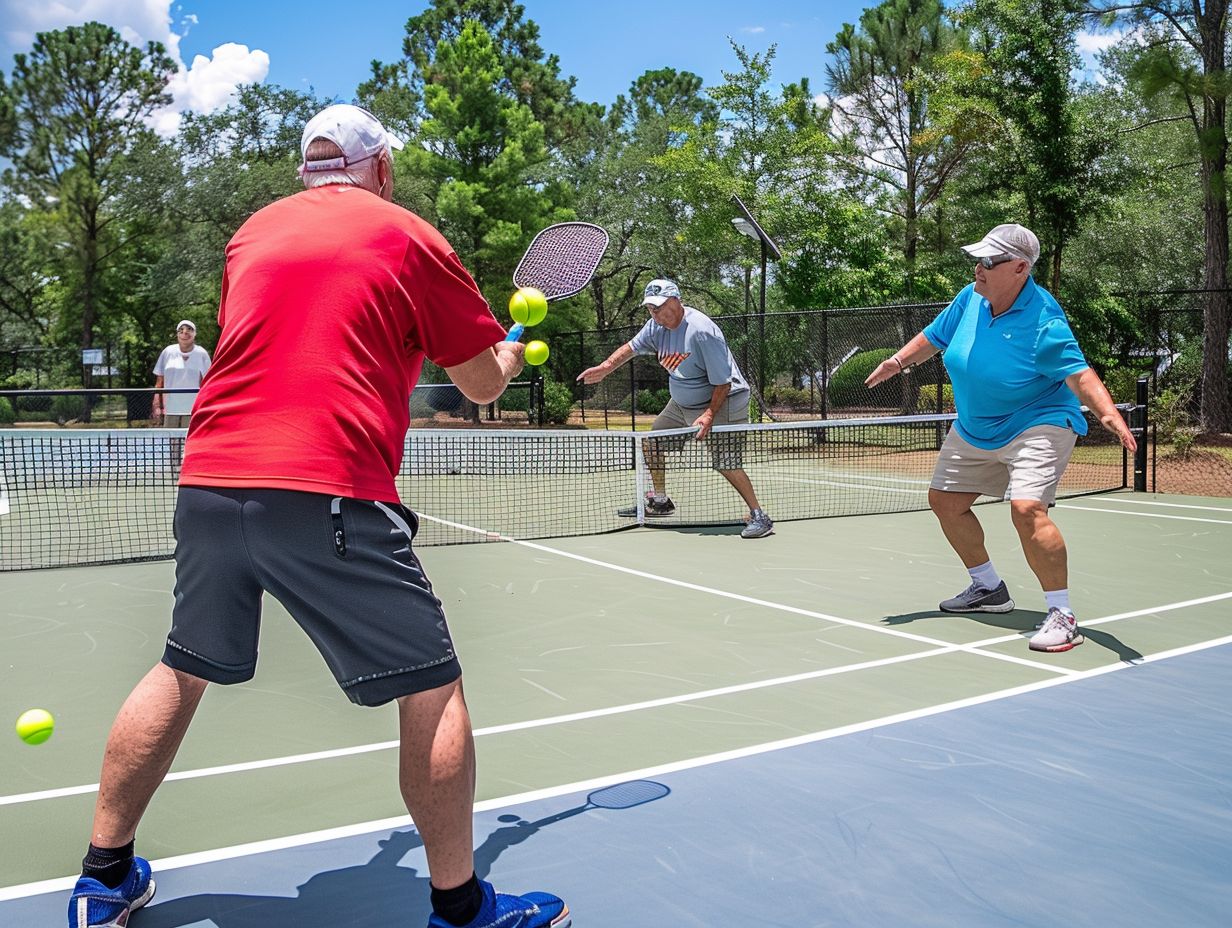
Rally Scoring may sometimes lead to longer games, requiring players to invest more time and effort to secure a victory.
One of the reasons why Rally Scoring can extend game durations is the fact that every single point can potentially contribute to the overall score, making it crucial for players to fiercely compete in each rally. This not only intensifies the gameplay but also leads to more prolonged matches. As the game progresses, the accumulation of points through rallies adds up, resulting in more extended gameplay sessions where players need to showcase their physical and mental endurance.
Tips for Playing with Rally Scoring
To excel with Rally Scoring, players can follow key tips like staying focused, effective communication with their partner, and using timeouts strategically.
Staying focused during a rally is crucial as it helps players anticipate their opponents’ moves and respond effectively. Clear communication with your partner ensures seamless teamwork and coordination on the court. Knowing when to strategically call a timeout can break the opponent’s momentum, allowing you to regroup and strategize for the next points. By implementing these strategies, players can enhance their gameplay and performance in pickleball matches using Rally Scoring.
Stay Focused and Consistent
Maintaining focus and consistency is vital in pickleball with Rally Scoring, regardless of the player’s skill level, to capitalize on scoring opportunities and maintain performance.
In pickleball, every point counts, and focus and consistency can be the deciding factors between a victory and a defeat. Players who can maintain their concentration throughout the game are more likely to execute strategies effectively and anticipate their opponent’s moves.
Rally Scoring, with its continuous back-and-forth style, demands players to stay attentive and ready to respond swiftly. This format not only tests physical endurance but also challenges mental agility, requiring quick thinking under pressure.
Consistency in shot placement and execution is crucial when every point matters. It’s not just about hitting the ball over the net; it’s about placing it precisely where your opponent is least likely to return it effectively.
Communicate with Your Partner
Effective communication with your partner is crucial in doubles with Rally Scoring, as it enhances coordination, strategy, and overall team performance.
When playing pickleball, especially in doubles with Rally Scoring, being able to effectively communicate with your partner can make all the difference in your gameplay. Clear and concise communication between partners helps in coordinating movements, setting up strategic plays, and ensuring that both players are on the same page.
By openly discussing tactics and constantly updating each other on the game progress, partners can adjust their strategies accordingly and react promptly to their opponents’ moves. This level of communication fosters teamwork and synergy, giving the duo a competitive edge on the court.
Utilize Your Timeouts Wisely
Strategic use of timeouts is essential with Rally Scoring to regroup, strategize, and potentially shift the momentum of the game based on point counts and game situations.
Timeouts not only serve as a breather for players, allowing them to refocus and recharge, but also play a crucial role in disrupting the opponent’s rhythm or breaking their momentum. By taking a well-timed timeout, players can disrupt the flow of the game, creating a moment to recalibrate strategical approaches or mental mindset. This pause in action enables teams to discuss tactics, address weaknesses, and come up with a game plan to counter the opponent’s strengths.
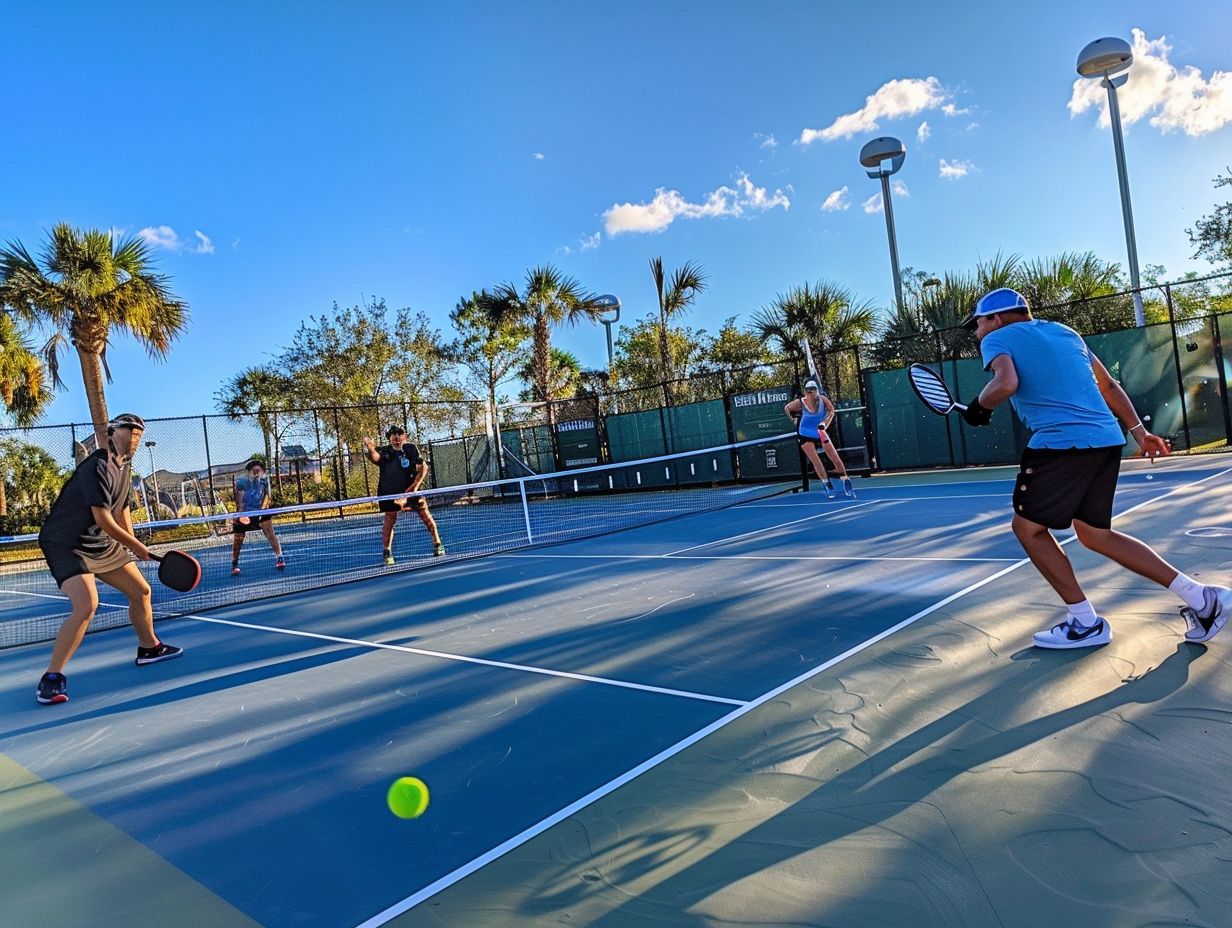
Frequently Asked Questions
What is Pickleball Rally Scoring?
Rally Scoring is a unique scoring system used in pickleball, where points can only be won by the serving team and games are played to 11 points. This scoring system allows for longer rallies and keeps the game moving quickly.
How is Pickleball Rally Scoring different from traditional scoring?
In traditional scoring, points can be won by either team on any serve, and games are played to 15 or 21 points. Rally Scoring requires the serving team to win a point to stay at serve, and games are played to 11 points with a margin of two points to win.
What happens if the serving team loses a point in Pickleball Rally Scoring?
If the serving team loses a point, the serve will switch to the opposing team and they will have the opportunity to score. Only the serving team can score points in Rally Scoring, making it crucial to maintain the serve.
Can the serving team win multiple points in a row in Pickleball Rally Scoring?
Yes, the serving team can win multiple points in a row in Rally Scoring. As long as the serving team continues to win points, they will continue to serve until they lose a point.
Is Pickleball Rally Scoring used in professional matches?
Yes, Rally Scoring is used in professional matches. It is the preferred scoring system for most tournaments and is used in both singles and doubles matches.
How does Pickleball Rally Scoring affect the pace of the game?
Rally Scoring allows for longer rallies and keeps the game moving quickly. With the serving team needing to win a point to maintain serve, there is less downtime between points and the game can be more fast-paced and exciting.

